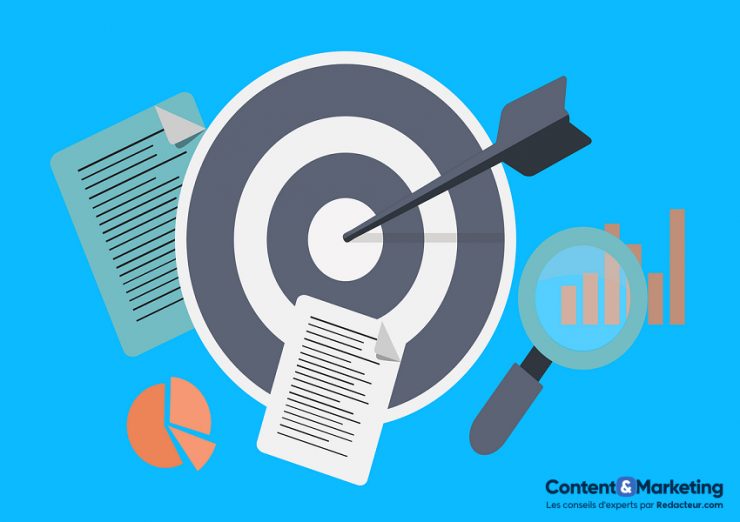
Using the latest analytics and search engine algorithms can help you create high-quality data-driven content. It is important to ensure that your content matches users' intent and that you regularly optimise your posts. You must ensure that you are always optimizing your content for search engines as they change daily. Google Search Console or Analytics are two tools that can help you track the performance of your content. These tools show you SEO position, audience information, and conversions. Here are four ways to use data-driven content to improve your website's online visibility.
Analyse keywords and topic
Using keyword and topic analysis tools for data-driven content creation is an effective way to discover what your audience is looking for. You can find topics your target audience searches for by analysing search queries. The most popular keywords are generally the most sought-after. High-ranking websites can help you determine which content is most popular with your customers. Customers use highly competitive keywords. Semantically-related subjects are topics that relate to keywords your customers searched for.
A keyword and topic analysis tool to analyze data-driven content can improve the navigation of your website and help identify any gaps. There may be keywords you're using that don’t have pages or are already available, such as rental properties. You could also use top keywords to decide which topics you want to write about on your blog. If you don't have the right pages, or blog topics, then top searches for "rental properties" might be a good place for you to start.
Audience research

To create data-driven content marketing campaigns, audience research is critical regardless of your company's objectives. With so many options available, consumers are becoming more knowledgeable about how to get information and make informed decisions. To market to these customers in the most effective way, audience research is vital. Audience research is a great way to find out about customer location, their buying intentions, and even the times they are there. This data can also be used to develop user profiles that give insight into how your audience behaves and what they're looking for.
To begin with, conducting audience research will help you create an accurate profile of your target audience. This information can help you create content that reaches the right people, and converts them into customers. Data can be used to audit your website, social media channels and ensure that your content receives maximum visibility and converts. You can use this data to improve your website or content marketing.
Analyses after production
With post-production analysis, data-driven content can be optimized to meet its audience's needs and maximize ROI. Predictive analytics is a way for companies to learn about viewer behavior and target audiences. The post-production analysis gives marketers insight into which content types are more successful and how to convert customers. This way, they can create compelling content that engages and converts consumers. Data-driven content can not only maximize ROI but also allow for customization to meet each brand's requirements.
A systematic approach is required to create data-driven content. First, you need to determine who is the most engaged among your audience and what content is attracting the most attention. Second, determine which topics or channels are generating the most engagement. Next, map out your content strategy. You can even use data to create your content map. This will allow you to measure how well your content is aligned with your customers' journey stages. Once you've developed the content map, use data-driven insights to refine and adapt your content strategy.
Link building

There are many techniques for building link and data-driven content. These include reaching out to industry blogs, creating blog series about a topic, partnering up with companies for webinars or recreating data as infographics. These tools allow you to create content that is relevant to the search terms your target audience is looking for. Here are some examples for data-driven content, and link building strategies.
Link building can be made easier by using big data. It allows you to identify and remove unnatural links. Google Analytics will show you which pages have received organic search traffic. Big data can also help you determine which keywords generate more traffic. Each link's purpose is to bring value to the readers. Google Analytics gives you a comprehensive report on your audience. This includes search volume and keyword competition. Data-driven content will make your efforts more effective.
FAQ
What is one of the main goals of content marketing?
Content marketing aims to create valuable and relevant information for customers. This should be done through different channels such as email campaigns, blog articles, white papers, etc. Your audience should be able to see the value you are providing.
How can you create a content marketing strategy that is effective?
Start by deciding what kind of content content you want. Next, define your target market. Then determine how they use the Internet. Next, choose the best channels to reach your target audience. Next, identify the best keywords for each channel. Finally, write compelling copy for each piece.
Is content marketing easy to measure?
Yes! You can measure the results. It helps you determine whether your efforts were successful and whether you need to make changes.
It is possible to track the number of visitors from different sources, including organic search, email and social media. You can also track conversions such as sales leads or purchases.
These metrics tell you which parts of your content are performing well and where you have the greatest potential.
What are some of the benefits of content-marketing?
Content marketing helps drive leads and sales by creating high-quality content. Content marketing also provides a steady stream of fresh, original content that can be used to promote products and services. Content marketing helps increase brand awareness, trust and engagement among potential customers. Additionally, content marketing helps to project a positive image about your company.
Can I do content marketing without an SEO expert? Yes!
SEO experts understand how search engines like Google rank pages. They can also tell you which keywords to target when optimising your page.
How much should I invest in content marketing?
It depends on how many leads your company wants to generate. Depending upon the industry, the average cost for a lead can range from $5 to $10. When we started our business, for example, we spent about $20 per lead. Now, we spend around $6-7 per lead.
Statistics
- Seventy-two percent business to business (B2B) (mailchimp.com)
- An example of an overarching goal could be: "In 2022, we want to achieve a 20% increase in revenue created by organic content and generate 15,000 MQLs with a budget of $30,000." (semrush.com)
- This marketing strategy landed Ford a 15.4% conversion rate. (neilpatel.com)
- To further show the importance of this, 89% of people have stopped doing business with a company because of a poor experience. (neilpatel.com)
- We found that 40% of businesses don't have a documented strategy yet. (semrush.com)
- According to our research, 65% of companies with very successful content marketing in 2021 ran content audits at least twice a year. (semrush.com)
- In fact, would pay more for a better customer experience, and 86% of B2B buyers would pay more. (neilpatel.com)
- Content marketing produces 3X more leads per dollar spent. Content marketing costs 62% less than traditional marketing. (criteo.com)
External Links
How To
How do we create content marketing strategies?
First, you need to understand what type of content you are going to create for clients. Once this is defined, it's time to start creating content. This could mean creating an editorial calendar and planning the source of these content. Content should always be purposeful. It doesn't really matter what content you're using, whether it's blog posts or social media updates. But they all should have a single purpose.
After you decide what content type you want to produce it is time to discover who your target market really is. What are their interests and what do they care about?
After identifying your target market, next comes finding ways to communicate with them. However, social media platforms are a fantastic way to get in touch with people. There are also other options like videos, podcasts or webinars.
Once you have decided how you want to communicate with your target market, the next step will be to identify what topics and types you want content to cover. This goes back to the purpose of writing the content. What problem does this solve? How helpful is it? Will it make their life easier?
You now know what content you like to write. Now it's time for you to decide what you want. Is it possible to share information related to your industry? On current events? Which products and services are you most interested in? The answer to this question defines your focus.
Now it's time for you to merge everything into one package.
You want to ensure that every piece of content you create serves its purpose. It is important to not waste time or energy. Therefore, you should ensure that every piece of content you create has quality.
You must remember that a content marketing strategy of great quality has many parts.